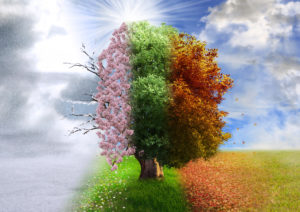A midwest winter can really take a toll on your yard. Heavy snow will kill your grass and create unsightly patches on your lawn. You can restore the appearance of your yard and make it beautiful for the spring season with the following tips.
Eliminate Dead Turf
Getting rid of any dead turf is the first step to restore your lawn to its former glory after winter. Inspect your yard for dead turf. To eliminate the dead turf, simply pull any dead grass from the soil. The dead grass doesn’t have any roots bound to the soil, so removing it should be a fairly easy task. You can remove the dead turf with your hands or use a rake to save time if you have a large yard. Eliminating the dead turf will allow water, fertilizer, and oxygen to reach the roots of your grass.
Reseed
Reseeding is the next step to restore your lawn after winter. You should wait for the frost to thaw before you begin this process. Ideal soil temperatures for reseeding are between 50 and 60 degrees Fahrenheit. Be sure to till the soil on your lawn up to four inches deep. After tilling, rake the top of the soil in order to remove debris and weeds. If weeds are a big problem for you, you can apply a pre-emergent weed killer before your lawn resumes growth. Finally, scatter your seeds onto the soil. Be sure to do this evenly, using either your hands or a mechanical seeder. Rake the soil lightly, covering the seeded areas with a quarter-inch area of soil. Water the seeded areas regularly until the seeds begin germinating.
Irrigation
As mentioned, watering your newly seeded lawn is important. You should irrigate your lawn either daily or weekly depending on the amount of rain you are receiving. Deep watering helps greatly in the germination process, which is vital to restore your lawn. You want to supply enough water to your lawn so that it is moist, up to six inches deep, allowing the grass to form deep and strong roots. Irrigation stops your grass from drying and keeps it vibrant and beautiful.
Fertilize
If you want to restore the health of your lawn after winter, you must fertilize. The soil and roots of your lawn need nutrients in order to prosper and stay healthy. You can use either high-phosphorus fertilizer or organic manure to improve your soil’s fertility. You may want to consult with a professional to choose the right fertilizer for you and your lawn. The knowledgeable team at Central Services is happy to help.
Caring for your yard properly post-winter will leave it looking beautiful and refreshed. Once your yard is properly restored, consider implementing some of our Spring landscaping ideas.




